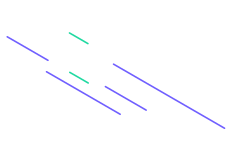





Name
Chamberlain University
NR-304: Health Assessment II
Prof. Name
Date
The evaluation phase of the nursing process involves reassessing the patient to determine whether established goals of care have been achieved. This step is essential for ensuring patient-centered outcomes, as it allows the nurse to adjust or modify interventions based on the patient’s progress.
During the diagnosis phase, nurses analyze patient data to identify an accurate NANDA-approved nursing diagnosis. Data are clustered for relevance, while irrelevant information is discarded. This systematic process enables the nurse to clearly define the patient’s health problem, forming the basis for further care planning.
A problem-centered database is used for short-term or limited assessments. It usually focuses on one particular issue or body system. This type of database is effective in all healthcare settings, as it allows for efficient, targeted evaluation.
| Type of Database | Characteristics | Setting |
|---|---|---|
| Problem-Centered | Limited scope, short-term, focuses on one problem | All settings |
The general survey involves an overall observation of the patient and begins the moment the patient enters the healthcare environment. It includes four major components: physical appearance, body structure, mobility, and behavior.
Physical Appearance includes evaluation of age, sex, level of consciousness, skin color, facial features, and overall signs of distress.
Body Structure involves stature, nutrition, symmetry, posture, positioning, body build, and the presence of deformities.
Mobility is assessed through gait and range of motion.
Behavior encompasses facial expression, mood, affect, speech, dress, personal hygiene, and interaction with others.
| Grade | Description |
|---|---|
| 3+ | Full, bounding pulse |
| 2+ | Normal |
| 1+ | Weak, thready |
| 0 | Absent |
Acute myocardial infarction: decreased cardiac output
Shock: decreased cardiac output
Hemorrhage: decreased total blood volume
Vasodilation: decreased peripheral resistance
Addison disease: decreased circulating aldosterone
When counting respirations, avoid informing the patient to ensure natural breathing. Count for 30 seconds after pulse measurement and multiply by two. If irregularities are suspected, count for a full minute.
Smoking contributes significantly to the development of hypertension. It damages blood vessels and increases the risk of cardiovascular disease.
Acute pain often presents with physical and behavioral responses such as grimacing, guarding, moaning, diaphoresis, restlessness, agitation, and alterations in vital signs.
A: Asymmetry
B: Border irregularity
C: Color variation
D: Diameter > 6 mm
E: Elevation or evolution
F: Funny looking
| Technique | Indication |
|---|---|
| Patient makes heart shape with hands | Look for gap between nails |
| Profile sign | Nail base angle should be ~160° |
| Skin Type | Pallor | Cyanosis | Erythema | Jaundice |
|---|---|---|---|---|
| Light | Generalized/localized | Dusky blue, nail beds dusky | Bright red/pink | Yellow in sclera, palate, mucous membranes |
| Dark | Yellow-brown/ashen gray | Dark, dull; check mucosa and nail beds | Purplish tinge, assess warmth | Palate junction, palms |
| Stage | Description |
|---|---|
| I | Non-blanchable redness |
| II | Partial-thickness skin loss, open blister, red-pink bed |
| III | Full-thickness skin loss, crater with visible fat |
| IV | Full-thickness tissue loss with exposed muscle, tendon, or bone |
To assess neck range of motion (ROM), instruct the patient to flex the chin to the chest, rotate the head side-to-side, bring ears toward the shoulders, and extend backward. Any limitations should be noted.
Common manifestations of hypothyroidism include goiter, eyelid retraction, and exophthalmos.
Breast cancer may present with lumps, nipple discharge, discomfort, and nipple inversion.
Post-mastectomy complications include bleeding, infection, arm swelling, shoulder stiffness, pain, and numbness due to lymph node removal.
Thoracic inspection involves observing chest wall shape, alignment of spinous processes, symmetry of the thorax, skin color, and the patient’s breathing position.
| Sound | Characteristics |
|---|---|
| Wheezes | High-pitched: squeaking; Low-pitched: snoring or moaning, may clear with coughing |
| Crackles | Fine: high-pitched, discontinuous, inspiration only, not cleared by cough; Coarse: low-pitched, bubbling, may decrease with cough |
| Type | Condition |
|---|---|
| Fine | Pneumonia, heart failure, fibrosis, chronic bronchitis, asthma, emphysema |
| Coarse | Pulmonary edema, pneumonia, pulmonary fibrosis, terminally ill |
A respiratory rate greater than 24 breaths per minute may indicate fever, fear, exercise, pneumonia, alkalosis, respiratory insufficiency, pleurisy, or pontine lesions.
| Method | Findings |
|---|---|
| Subjective | Chest pain with inspiration, dyspnea |
| Inspection | Apprehension, cyanosis, tachypnea, cough |
| Palpation | Diaphoresis, hypotension |
| Auscultation | Tachycardia, crackles, wheezes |
| Method | Findings |
|---|---|
| Inspection | Increased RR, SOB with wheeze, accessory muscle use, cyanosis, barrel chest (chronic cases) |
| Palpation | Decreased tactile fremitus, tachycardia |
| Auscultation | Diminished air movement, prolonged expiration, bilateral wheezing |
Heart failure may present with dilated pupils, cyanosis, dyspnea, orthopnea, wheezing or crackles, cough, decreased blood pressure, edema, anxiety, jugular vein distention, fatigue, weak pulse, hepatosplenomegaly, cool skin, and low oxygen saturation.
Health promotion strategies include aspirin therapy, blood pressure and cholesterol control, smoking cessation, and lifestyle modifications such as diet and exercise.
Patients with acute coronary syndrome may report indigestion, nausea, vomiting, dizziness, flushing, palpitations, perspiration, dyspnea, and fatigue.
| Assessment | Findings |
|---|---|
| Subjective | Leg pain/cramps, swelling, skin changes, lymph node enlargement, smoking history, medications |
| Inspection/Palpation | Pulses, capillary refill, clubbing |
Lymphedema is associated with inadequate lymphatic drainage.
Venous insufficiency may be alleviated by leg elevation, walking, or lying down.
| Type | Findings |
|---|---|
| Subjective | Aching, heaviness, fatigue, restless legs, burning, cramping |
| Objective | Dilated, tortuous veins |
| Type | Findings |
|---|---|
| Subjective | Sudden, deep muscle pain |
| Objective | Warmth, swelling, redness, tenderness |
Venous return is supported by skeletal muscle contraction, breathing pressure gradients, and intraluminal valves.
Chronic venous disease may present with edema, varicosities, and ankle ulcers.
| Grade | Description |
|---|---|
| 1+ | Mild pitting, slight indentation, no swelling |
| 2+ | Moderate pitting, indentation subsides quickly |
| 3+ | Deep pitting, leg swollen, indentation remains briefly |
| 4+ | Very deep pitting, prolonged indentation, gross swelling |
Patients with arterial disease may show low ankle-brachial index, pale or cool skin, diminished pulses, and pallor on leg elevation.
In older adults, vascular changes include arteriosclerosis, loss of lymphatic tissue, and enlarged calf veins.
| Method | Findings |
|---|---|
| Inspection | Uniformly rounded abdomen, sunken umbilicus |
| Auscultation | Normal bowel sounds |
| Palpation | Normal, though wall may feel thick |
Hypoactive bowel sounds may occur due to peritonitis, paralytic ileus following surgery, or late bowel obstruction.
| Type | Findings |
|---|---|
| Laboratory | Dehydration, electrolyte loss, possible sepsis |
| Radiology | Fluid/gas accumulation proximal to obstruction |
| Physical Exam | Distension, tenderness, hyperactive early, hypoactive late, hypovolemic shock |
Clinical manifestations include vomiting, fever, colicky abdominal pain, and absence of stool/gas.
A positive Murphy sign indicates inspiratory arrest due to gallbladder inflammation.
Involuntary rigidity: constant, boardlike hardness due to peritoneal inflammation.
Voluntary guarding: bilateral tension that relaxes with exhalation, common if the patient is cold or anxious.
Late rheumatoid arthritis may cause ulnar deviation or drift.
Common deformities include kyphosis and limited range of motion.
Risk factors include postmenopausal status (especially white women), small stature, early menopause, estrogen deficiency, and lack of physical activity.
| Nerve | Test |
|---|---|
| I | Present familiar scent with eyes closed |
| II | Test visual fields by confrontation |
| III, IV, VI | Assess pupils, light reaction, gaze positions |
| V | Motor: palpate jaw muscles; Sensory: cotton touch |
| VII | Assess facial mobility (smile, frown, puff cheeks) |
| VIII | Whispered voice test |
| IX, X | Use tongue depressor, say “ahhh”; uvula rises |
| XI | Shrug shoulders, turn head against resistance |
| XII | Inspect tongue, say “light, tight, dynamite” |
A normal Glasgow Coma Scale score is 15, while a score of ≤7 indicates coma.
F: Face drooping
A: Arm weakness
S: Speech difficulty
T: Time to call 911
| Type | Findings |
|---|---|
| Risks | Hypertension, smoking, cardiac disorders |
| Manifestations | One-sided weakness, confusion, dizziness, loss of balance, headache, vision changes |
A positive Romberg test, seen in cerebellar ataxia or vestibular loss, indicates loss of balance with eyes closed.
Urinary retention involves difficulty or inability to pass urine, which may increase the risk of urinary tract infections (UTIs).
| Type | Findings |
|---|---|
| Subjective | Frequency, urgency, hesitancy, weak stream, nocturia |
| Objective | Symmetric, nontender prostate enlargement with smooth, firm surface |
In older adults, urinary tract infections may present atypically with communication difficulties, confusion, or lethargy rather than the typical urinary symptoms.
Doenges, M. E., Moorhouse, M. F., & Murr, A. C. (2019). Nursing care plans: Guidelines for individualizing client care across the life span (9th ed.). F.A. Davis Company.
Ignatavicius, D. D., Workman, M. L., & Rebar, C. R. (2018). Medical-surgical nursing: Concepts for interprofessional collaborative care (8th ed.). Elsevier.
Jarvis, C. (2020). Physical examination and health assessment (8th ed.). Elsevier.
Smeltzer, S. C., Bare, B. G., Hinkle, J. L., & Cheever, K. H. (2017). Brunner & Suddarth’s textbook of medical-surgical nursing (14th ed.). Wolters Kluwer.